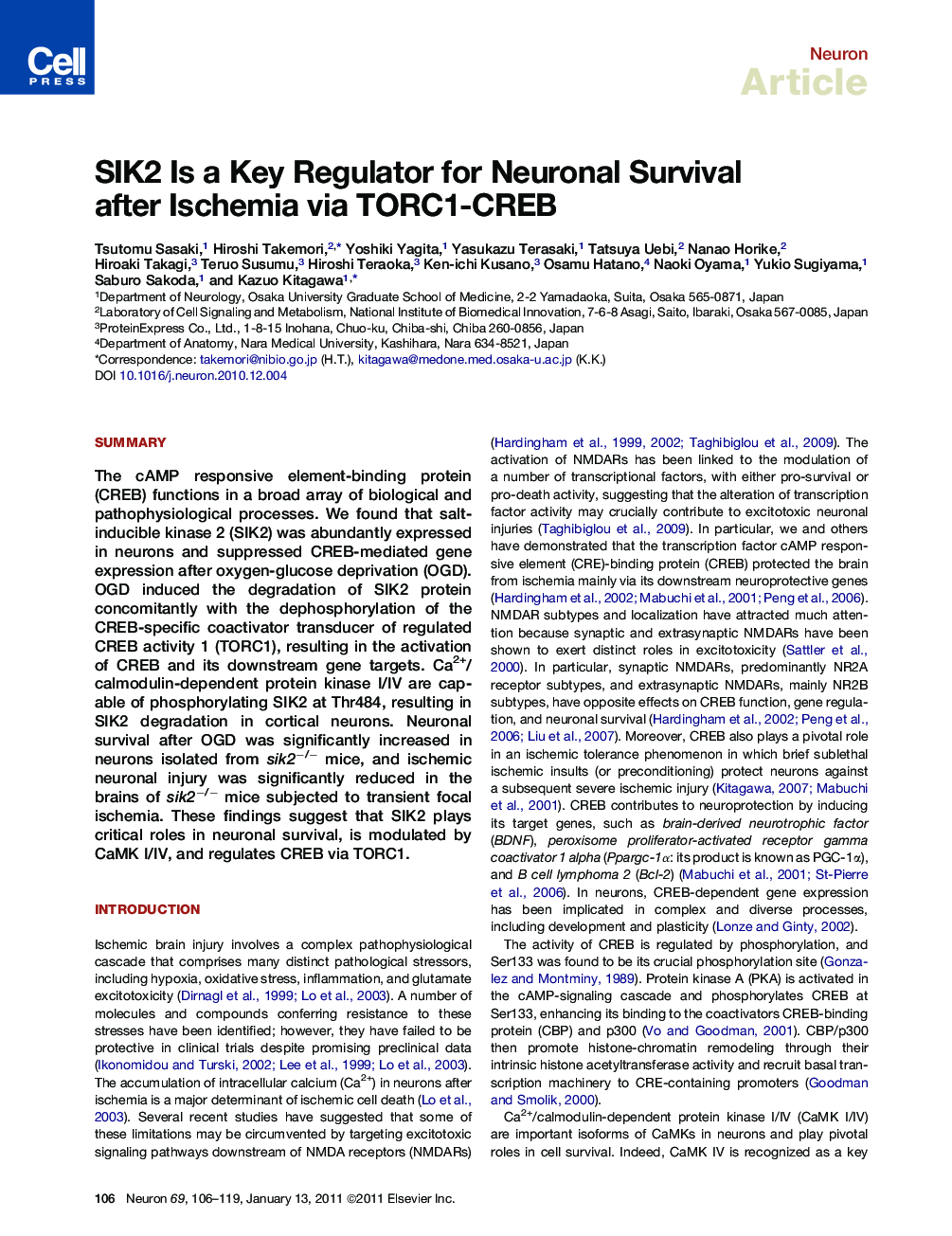| Article ID | Journal | Published Year | Pages | File Type |
|---|---|---|---|---|
| 4322293 | Neuron | 2011 | 14 Pages |
SummaryThe cAMP responsive element-binding protein (CREB) functions in a broad array of biological and pathophysiological processes. We found that salt-inducible kinase 2 (SIK2) was abundantly expressed in neurons and suppressed CREB-mediated gene expression after oxygen-glucose deprivation (OGD). OGD induced the degradation of SIK2 protein concomitantly with the dephosphorylation of the CREB-specific coactivator transducer of regulated CREB activity 1 (TORC1), resulting in the activation of CREB and its downstream gene targets. Ca2+/calmodulin-dependent protein kinase I/IV are capable of phosphorylating SIK2 at Thr484, resulting in SIK2 degradation in cortical neurons. Neuronal survival after OGD was significantly increased in neurons isolated from sik2−/− mice, and ischemic neuronal injury was significantly reduced in the brains of sik2−/− mice subjected to transient focal ischemia. These findings suggest that SIK2 plays critical roles in neuronal survival, is modulated by CaMK I/IV, and regulates CREB via TORC1.
► The degradation of SIK2 leads to the activation of TORC1-CREB cascade after ischemia ► CaMK I/IV is an upstream regulator of SIK2-TORC1 signaling ► Synaptic NMDA receptors lead to the activation of SIK2-TORC1 cascade ► SIK2 is a crucial regulator for cell fate and survival after neurotoxicity
